We sincerely hope that each of you, our readers, will both enjoy and appreciate this article we present about these 5 Riveting Atlantic Ocean Rays. It was certainly our pleasure to compile the information for you, our readers. May it provide you with both education and increased awareness.
These few species listed herein represent only a small portion of the astounding natural wonders found throughout the oceans, though. Yet, it’s our belief that they serve as excellent representations of the wonders found here. Check out some of our other many articles for similar marvels.
Spiny Butterfly Ray
Spiny Butterfly Ray Facts
- Leading off this article about these 5 Riveting Atlantic Ocean Rays comes the remarkable creature known as the Spiny Butterfly Ray.
- This intriguing product of Nature and evolution most frequently goes by the surprising name of the one we’ve used herein. Yet that isn’t the only general title it possesses, though. The remarkable fish is also sometimes called the giant butterfly ray in parts of its range.
- Within scientific circles, however, it’s perhaps most typically referred to by its fully formal name. Fortunately for the layperson, that’s a comparatively simple to pronounce title, at least compared to many. That’s because it bears the official moniker of Gymnura altavela.
- The amazing creature received that appellation due to the efforts of the highly renowned Swedish zoologist, Carl Linnaeus. He accomplished the first official recognition of it as a separate and distinct species. That scientifically noteworthy event occurred in the year 1758.
- Regardless of which of these terms one chooses to use when speaking of it, the animal remains an impressive species. It’s generally harmless to humans, though an individual stepping on it may receive a very painful wound. Sadly, it’s actively fished in many parts of its range.
- Regrettably, the population base of the awesome Spiny Butterfly Ray appears to be diminishing. That unfortunate state also seems to hold true throughout the entirety of its territory. The IUCN currently lists it as Endangered on its published Red List of Threatened Species.
- This marvelous animal now faces numerous threats to its continued existence as a species. Due to human demand for its flesh, its population has decreased by an estimated 30% in recent decades. It also now faces the same danger posed by climate change as other species.
Spiny Butterfly Ray Physical Description
The Spiny Butterfly Ray clearly merits the appreciation it receives from many of those who encounter it in the wild. The appearance of the animal certainly qualifies as one reason for that notice. It’s also worth mentioning that it impresses the viewer with its measurements, too.
The creature further displays a certain degree of the phsyiological characteristic of sexual dimorphism. In its specific case, that natural trait manifests itself in terms of pure physical size. More precisely, the females of the species attain a larger average size than the males do.
That gender-based difference, though, remains relatively minor. Overall, fully mature adults reach an average body width equaling roughly 6.56 ft (2 m). Exceptional specimens do naturally occur, however. Even these, though, rarely exceed these dimensions by any significant amount.
The body structure’s also been described by some as lozenge-shaped. That’s due to the fact that it’s significantly broader than long. Its disk also generally displays a combination of strongly rounded corners and concave front margins. The tail, though, develops as short and quite slender.
The snout of the Spiny Butterfly Ray also presents as comparatively short, as well as relatively blunt. It has large numbers of small, conical teeth in the mouth. The mouth is also bordered on each side by a unique, tentacle-like appendage. Several serrated spines appear at the base of the tail.
In coloring, the skin of the creature commonly presents a background of dark brown on the upperside. Small spots, of either a darker or lighter shade, occasionally appears, too. These markings often show a marbled pattern. On the belly, the skin typically manifests an off-white shade.
- Kingdom: Animalia
- Phylum: Chordata
- Class: Chondrichthyes
- Order: Myliobatiformes
- Family: Gymnuridae
- Genus: Gymnura
- Species: G. altavela
Spiny Butterfly Ray Distribution, Habitat, and Ecology
The Spiny Butterfly Ray evolved a native to a region of the earth’s oceans that doesn’t surprise many of those individuals who learn of it. That’s true since it developed as endemic to part of the Atlantic Ocean. Within that greater area, however, it lives within the tropical and temperate waters.
Yet inside of that native territorial range, its distribution remains best described as scattered and spotty. In the western part of its range, it lives as far as Massachusetts, in the United States. To the south, its range extends as far as Argentina, in South America. It’s rare in the Gulf of Mexico.
The species further displays extremely specific preferences regarding its choice of habitats. These, though, severely limit its expansion possibilities. It appears only in shallow coastal waters, in many cases brackish in nature. On the Virginia coast, it’s common in the mouths of tidal creeks.
These regions must also possess yet another attribute for the fish to choose to live there. That’s the presence of either muddy substrates or soft, sandy bottoms. It’s unknown at depths exceeding 328 ft (100 m). Many specimens, in fact, often appear at depths measuring no more than 16 ft (5 m).
Like its relatives around the world, the Spiny Butterfly Ray feeds as a pure carnivore. Its precise prey varies, depending on the exact region in which it lives. In general, though, it feeds on such creatures as squid, small sharks, fish, gastropods and crustaceans. It also hunts as an active predator.
Its own natural enemies, however, remain relatively extremely few in number. This list most commonly includes larger sharks and marine mammals. Females give birth to live young, usually numbering up to eight. Lifespan varies, of course, but tends to average approximately eight years.
Southern Stingray
Southern Stingray Facts
- Next up in this compendium of 5 Riveting Atlantic Ocean Rays we present the amazing fish best known by the title of Southern Stingray.
- This marvelous marine beauty most frequently goes by the somewhat descriptive common name in most of its range. Like most species, though, it’s also known by a few other terms, too. These options include such varied titles as the stingaree, kit, and whip stingray.
- Among scientific professionals, however, it’s perhaps much better known by its purely technical moniker. That’s actually a simple term for the layperson to pronounce, though, relatively speaking. That’s because the fish bears the formal name of the Hypanus americanus.
- It received that particular appellation due to the efforts of a dup of American Ichthyologists. Samuel Hildebrand and William Schroeder accomplished the first recognition of it as a separate and distinct species. The team managed that scientifically noteworthy deed in 1928.
- Regardles of which term one chooses to use, it remains a truly impressive creature. Though certainly potentially dangerous to humans if it’s provoked, it’s normally quite docile in temperament. It’s even commonly seem swimming alongside snorkelers and divers.
- Sadly, the population numbers of the Southern Stingray appear to be in decline. This highly lamentable situation also seems to hold true throughout the entirety of its native range. The IUCN therefore currently lists the animal as Near Threatened on its published Red List.
- This marvel of Nature faces multiple threats to its continued existence as a species. Like most creatures, most of these stem from the actions of man. Some of the many dangers it faces include accidental bycatch, habitat degradation or loss, and the effects of climate change.
Southern Stingray Physical Description
The amazing Southern Stingray represents an approximately average-sized member of its Order. The animal nevertheless merits its own level of appreciation from its observers. The marine creature still possesses physical characteristics that make it worthy of note and respect from mankind.
Like the great majority of its numerous relatives on earth, the intriguing fish also presents a certain degree of the physiological trait of sexual dimorphism. In its case, this manifests itself in terms of simple measurements. Specifically, the females attain greater average dimensions than the male.
The difference develops as far greater than in some species, though. Females typically reach a maximum disc width equaling roughly 59 in (150 cm). The males, however, rarely exceed 26 in (67 cm) in this specific aspect. Though quite rare, exceptional examples do occur, regardless of gender.
Again following the pattern common among other rays, this species has a highly flattened body shape. It’s diamond-shaped in design, and also much more angular than others of its kind. This unique characteristic easily distinguishes it from the many other species in its Order.
The upperside of the body of the Southern Stingray generally presents a background that ranges from a dark green color to an olive-brown in adults. In the young, however, this usually appears as dark gray. Meanwhile, the underside most often shows degrees of a dull, off-white shade.
The eyes of this true wonder of evolution also develop on the top of the flat body, along with the spiracles, through which it breathes. The tail develops as extremely elongated, measuring much longer than the disc. At its base, this impressive appendage also hosts a lengthy, serrated spine.
- Kingdom: Animalia
- Phylum: Chordata
- Class: Chondrichthyes
- Order: Myliobatiforme
- Family: Dasyatidae
- Genus: Hypanus
- Species: H. americanus
Southern Stingray Distribution, Habitat, and Ecology
The fabulous Southern Stingray evolved as native to a small and specific territorial range of the vast oceans of the world. For most people, though, the location of that zone of habitation likely won’t come as any surprise. The marvel of Nature lives in the greater area of the Atlantic Ocean.
But, within that larger overall range, the fabulous fish only inhabits very specific sections of it. That area begins roughly in the northwest and western central part of the ocean. This range extends from the coast of New Jersey, in the United States, offshore of the continent of North America.
From there, though, its known home territory extends southward as far as the coastal waters of Brazil, in South America. Yet that natively evolved range additionally extends into several other marine regions of the earth. These other domains include the Gulf of Mexico and the Caribbean.
Despite this larger overall area, the marvelous fish always displays decided strong preferences regarding its choice of habitat. These effectively greatly curtail its options of where to live rather significantly. For one, it’s never been known to appear at depths greater than 328 ft (100 m).
The fascinating animal almost exclusively inhabits regions comprised of sandflats. Yet the precision of its needs don’t simply end there. These sites further need to be located comparatively close to coral reefs and/or seagrasses. The nature of the combination naturally limits its expansion.
Given its basic nature, the Southern Stingray understandably developed as carnivorous, like its many kindred. It preys on and consumes an impressively wide variety of available species. This diet essentially includes any smaller fish, crustaceans, worms, and molluscs it finds opportunistically.
In turn, this magnificent animal itelf possesses only a handful of known natural predators. The few creatures known to eat it include larger sharks, such as the Scalloped Hammerhead. In most instances, the venomous spines in its tail tend to be successful in discouraging potential threats.
Giant Manta Ray
Giant Manta Ray Facts
- Our next choice for inclusion in this gathering of 5 Riveting Atlantic Ocean Rays is the breathtaking behemoth called the Giant Manta Ray.
- Perhaps most notably, the surprising animal typically known by this highly impressive common name remains quite aptly named. This holds true due to the impressive fact that it presently constitutes the largest variety of ray known to exist anywhere on the planet.
- The supremely impressive animal also sometimes goes by the alternate common name of the Giant oceanic manta ray in parts of its range. Its scientific name, meanwhile, remains that of Mobula birostris. By any name, though, it remains a truly remarkable work of Nature.
- The breathtaking species also lists as a member of the Mobulidae Family, in scientific classification. Prior to the year 2017, though, scientists placed it within the genus Manta. Newer DNA testing, however, placed it in the genus Mobula. It therefore received a new name.
- For the moment, the IUCN lists the magnificent Giant Manta Ray as Vulnerable. This rating appears on the organizations’ published Red List of Threatened Species. This highly lamentable ranking further occurs partly due to an notably wide variety of factors, unfortunately.
- These reasons for its situation currently include a recent increase of its targeting in commercial fishing practices, largely due to a rise in its popularity in traditional Chinese medicine. Accidental bycatch also continues to represent a further danger to the magnificent animal.
- This holds true due to the fact that this practice frequently traps large numbers of the amazing species. However, the powerful creature also now faces the same threat all species around the world are dealing with. That’s the ongoing and still escalating threat of climate change.
Giant Manta Ray Physical Description
The Giant Manta Ray, like many species around the world, displays a moderate degree of the trait of sexual dimorphism. In the case of this creature, that characteristic presents itself in terms of physical size. That holds true because females of the species tend to be slightly larger.
The female of the species reaches an average span of about 18 – 22.3 ft (5.5 – 6.8 m). The somewhat smaller male attains an average span of roughly 17 – 20 ft (5.2 – 6.1 m). An average weight for both genders remains approximately the same, however. This equals roughly 3,527 lb (1,600 kg).
Yet, exceptional individuals of both genders do occasionally attain a significantly greater size. In fact, one specimen in particular measured 29.9 ft (9.1 m) across the wings. Regardless of size, however, both genders have the same shape. That consists of a flattened, roughly triangular form.
The Giant Manta Ray also possesses smaller fins positioned relatively near the head. These the creature typically keeps rolled up while swimming, though. This intriguing species actually evolved 18 rows of small teeth. The eyes, meanwhile, remain small and sit on the side of the head.
The tail of this wonder of Nature and evolution also grows comparatively long, as well as extremely slender in shape. The upper body of the species most commonly manifests as either black or steely blue. The underbelly of the animal, though, generally displays an off-white to grayish color.
- Kingdom: Animalia
- Phylum: Chordata
- Class: Chondrichthyes
- Order: Myliobatiformes
- Family: Mobulidae
- Genus: Mobula
- Species: M. birostris
Giant Manta Ray Distribution, Habitat, and Ecology
Astoundingly, the Giant Manta Ray possesses an almost global pattern of distribution. That’s because the gorgeous species inhabits nearly all temperate and tropical waters throughout the world. To the north, it appears as far as both coast of the United States, in North America.
In the other Hemisphere, though, this marine wonder appears as far south as both South Africa and New Zealand. Its exact environment, however, appears to vary quite significantly. That’s because some stay closer to shore, while the majority prefer to inhabit areas further out to sea.
However, in all regions in which it appears, the fabulous animal apparently prefers to inhabit markedly shallower waters. In fact, it rarely appears at depths exceeding 394 ft ( 120 m). This fact also separates it from most related of its related species, which prefer greater depths.
The magnificent ly evolved fish also evolved an extraordinary inter-dependency with several varieties of fish known as cleaners. These the ray approaches, and then stays motionless for several minutes. While it does, the cleaners consume the external parasites from the skin of the creature.
It also evolved as a variety of filter feeder by nature. In its case, the animal preys almost exclusively on zooplankton. These the animal strains through its rows of teeth. It also feeds by swimming in vertical loops. This pattern developed as a means of keeping its prey within easy reach.
Most commonly, the attention-grabbing Giant Manta Ray appears to prefer to live a primarily solitary life. On some occasions, thugh, individuals nevertheless group together temporarily. When this happens, members of the species band together in groups of as many as 50 individuals.
Spinetail mobula
Spinetail mobula Facts
- Appearing here in this listing of these 5 Riveting Atlantic Ocean Rays comes the incredible denizen of the depths named the Spinetail mobula.
- This majestic denizen of the marine waters of the world remains best known by the common name applied to it here. Yet the fish has several other titles it’s known by, too. They include such intriguing monikers as the Japanese mobula ray and the spinetail devil ray.
- Inside of the scientific community, however, it’s generally somewhat better known by its purely technical title. Thankfully, that’s currently a relatively simple term for the layperson to pronounce. That’s because the amazing species holds the official name of Mobula japanica.
- It received that title due to the combined efforts of two German researchers. Johannes Peter Müller and Friedrich Gustav Jakob Henle recorded the first recognition of it as a separate and distinct species. They accomplished this scientifically noteworthy feat in the year 1841.
- Fortunately, the impressive Spinetail mobula possesses a population base that’s both stable and sufficient. That pleasant situation seems to also hold true throughout the entirety of its range. The IUCN thus currently lists it as Least Concern on its Red List of Threatened Species.
- The remarkable animal nevertheless faces several potential threats to its continued existence as a species, at least. Like many creatures, most of these stem from the actions of mankind. They include accidental bycatch, habitat degradation, and the effects of climate change.
Spinetail mobula Physical Description
The intriguing Spinetail mobula represents one of those creations of Nature that garner appreciation from those who encounter it for a variety of reasons. That’s true since this remarkable fish possesses impressive attributes pertaining to not only its beauty, but its sheer physical dimensions, too.
The srtunning ray also distinguishes itself from many other creatures around the world in a very specific way. That’s because, unlike many of earth’s species, this animal displays no noticeable amount of the physiological trait of sexual dimorphism in terms of either size of appearance.
Individuals of both the sexes therefore present the same general outward phsyical characteristics. Both genders attain an average disk width equaling approximately 7.6 ft (2.3 m). Exceptional specimens do sometimes occur, however. The disks of these may reach up to 10 ft (3.1 m) wide.
Like most of its kindred around the world, the animal has a highly flattened body shape. It also has relatively large pectoral fins extending from either side of the disk. It further displays a second pair of smaller fins at the front of the body. These are actually an extension of the other fins.
The fascinating Spinetail mobula also displays a truly captivating pattern of coloring. The upperside of the animal’s body shows a deep bluish mauve shade. A single large black band extends from eye to eye. The underside, though, shows white. The smaller fins display slivery gray with black tips.
This wonder also varies in appearance from other large rays in several other ways. It displays a white-tipped dorsal fin, as well as an obvious spine, placed between the base of the dorsal fin and the start of the tail. That tail itself also typically reaches a greater length than in most rays.
- Kingdom: Animalia
- Phylum: Chordata
- Class: Chondrichthyes
- Order: Myliobatiformes
- Family: Mobulidae
- Genus: Mobula
- Species: M. japonica
Spinetail mobula Distribution, Habitat, and Ecology
The beautiful Spinetail mobula evolved as native to a comparatively large expanse of the marine regions of the surface of the earth. While the full extent of that zone of habitation might not surprise many of you, the precise location of its endemic territory just might do so for some.
That’s due to the fact that this marvel of Nature and evolution developed as native to most of the tropical and sub-tropical waters of eastern Atlantic Ocean and the Indo-Pacific Ocean. It’s also present in such connected regions as the Gulf of California, in Mexico, in North America.
This impressive natural wonder also evolved as extremely flexible in its choice of habitat. This results in it being found in an extraordinarily wide range of locations within its greater overall range. The only basic underlying requirements appear to be water temperature and salinity.
The fascinating variety of fish most typically lives in regions quite close to shore, almost to the shoreline, for one. Yet it also appears significantly further out to sea, in the vastly deeper areas. There, it’s spotted equally as often at great depths and at or near the surface of the ocean.
The Spinetail mobula further displays flexibility in its social habits. Most specimens choose to live both as a solitary individual and in groups of varying sizes. Researchers still know extremely little about its mating habits. It’s an ovoviviparous species, though, giving birth to live young.
It’s feeds as a filter feeder, with its principal food consisting of quantities of zooplankton. These it consumes via a filtering process. Its predators remain undetermined, but likely include such animals as larger sharks and Orcas. It’s lifepan is also unknown, but thought to be around 15 years.
Cownose Ray
Cownose Ray Facts
- Closing out this compilation of 5 Riveting Atlantic Ocean Rays we give you the tantalizing treat for the eyes called the Cownose Ray.
- This highly distinctive term perfectly serves as the most frequently used common name to refer to a single species of ray found within the genus Rhinoptera. For the moment, however, science recognizes that at least one subspecies of the animal also appears to exist.
- Quite understandably for those who have encountered one of them, the common name for the impressive creature derives from its unique physical appearance. Moreover, this truly remarkable creature technically currently classifies as a variety of what’s known as a stingray.
- This scientific classification occurs due to the extremely close genetic relationship the animal holds with both skates and sharks. In point of fact, this impressive animal, as well as the aforementioned sharks and skates, all belong to the same fascinating Order; Myliobatiformes.
- This beautiful product of Nature and evolution previously appeared to exist in comparatively vast numbers, as well as living across a relatively wide range of distribution. Sadly, however, its estimated population now represents only a very tiny fraction of those past numbers.
- For that reason, among others, the IUCN currently lists this incredible animal as Near Threatened on its published Red List of Threatened Species. The remarkable marine marvel does presently face several ongoing threats to its continued existence as a species at this time.
- While not commercially fished, the amazing fish does frequently fall prey to the actions of recreational fishermen. It also indirectly suffers from a reduction in its food supply, as pollution has now reduced this. Its greatest threat now comes in the form of climate change.
Cownose Ray Physical Description
Perhaps most notably, the beautiful Cownose Ray impresses those who encounter it for reasons other than sheer size. That’s because it ranks as one of the smaller known types of ray found throughout the world. This fact in no way detracts from the awesomeness of the creature, though
In addition to being smaller than many related species on earth, the animal also displays a fairly moderate degree of sexual dimorphism. In its case, though, this natural principle manifests itself in regards to sheer physical size. That’s because males of the species develop as larger than females.
Males of the amazing species attain an average width equaling about 45 in (1. 14 m). These also reach a typical weight of around 50 lb (23 kg). Yet, exceptional specimens occasionally occur. Females, meanwhile, reach a slightly smaller average width, as commonly occurs in species of this type.
In the case of this fascinating animal, this measurement equals approximately 39 in (1 m). The average weight of mature females also typically reaches a total of around 36 lb (16 kg). Unlike in size, specimens of the Cownose Ray of both genders display the same basic overall color pattern.
This distinctive pattern of coloration usually consists of a light to dark brown on the upper side of the body of the wonder. But, the underside of the body of the animal most often displays either a whitish or yellowish color. it also has a barbed tail, and mildly venomous teeth on its spine.
- Kingdom: Animalia
- Phylum: Chordata
- Class: Chondrichthyes
- Order: Myliobatiformes
- Family: Rhinopteridae
- Genus: Rhinoptera
- Species: R. bonasus
Cownose Ray Distribution, Habitat, and Ecology
Thankfully, both for it and those who appreciate Nature, the wonderful Cownose Ray currently inhabits a comparatively broad range of the marine regions of the world. More specifically, though, that territory includes portions of the eastern and western Atlantic Ocean and the Caribbean.
Consequently, this creature may be seen from the coastal waters of New England, in the United States, in North America, to Brazil, in South America. This fascinating animal also distinguishes itself from many of its numerous brethren in terms of its preferences for type of habitat.
That’s due to the fact that the majority of individuals of this species typically appear in areas comprised of shallow, brackish water. This most commonly happens to be where a river empties into the ocean. This wonder of evolution also rarely appears at depths greater than 72 ft (22 m).
The Cownose Ray further remains somewhat famous for its comparatively extensive migrations within its endemic range. Astonishingly, the amazing species also tends to migrate and live in incredible numbers. These massive groupings sometimes number as many as 10,000 individuals.
This pattern of group behavior also remains uncommon among creatures of its type, making it difficult to imagine one of these astounding herds during its migration. Although it differs from its relatives across the globe in some ways, its dietary practices remains consistent with related species.
That’s because this carnivore principally feeds on invertebrates. This diet typically consists of a variety of clams and oysters. Breeding occurs between the months of June and October. The young are born alive, following an 11-12 month gestation period. It also has an average lifespan of 16 years.
5 Riveting Atlantic Ocean Rays
We sincerely hope that each of you thoroughly enjoyed reading, and hopefully learning something from, this article we’ve written about these 5 Riveting Atlantic Ocean Rays. It’s also our fervent hope that doing so has left you with either a new or renewed appreciation for such wonders of Nature.
Unfortunately, however, many of their multiple kindred located around the world now find themselves facing strong threats to their continued existence as a species. Many of those dangers, in fact, stem from the actions of mankind. We must do all we can to protect and preserve them all.
Check out our other articles on 5 Marvelous Mammals of California, Earth’s Amazingly Abundant Avians, 5 Fabulous Flora of Germany, Africa’s Many Geological Masterpieces
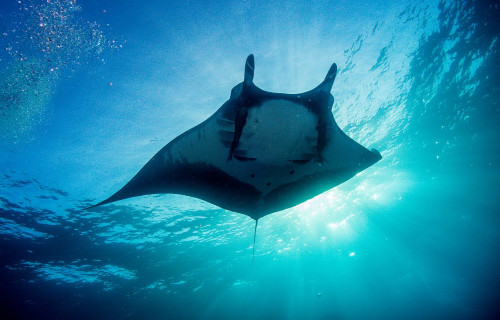
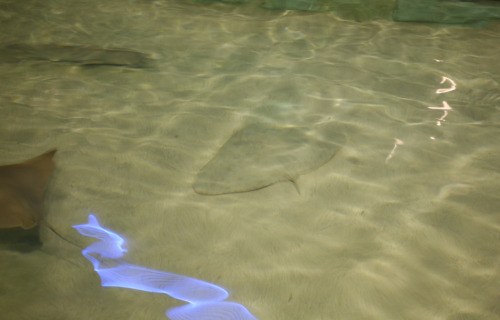
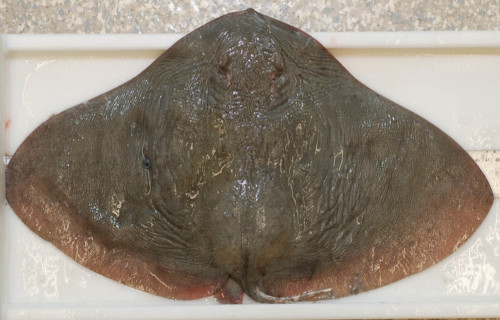
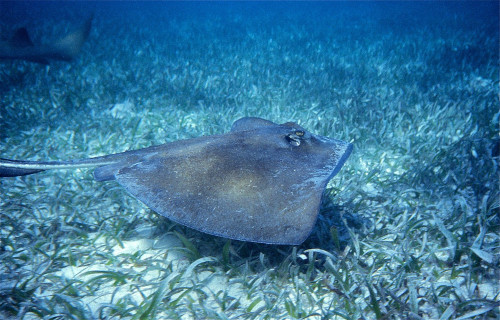

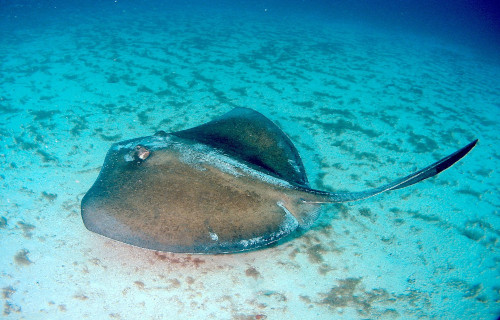
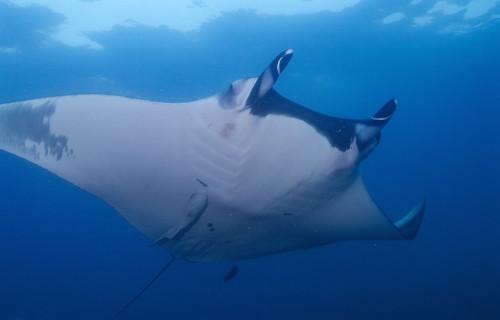
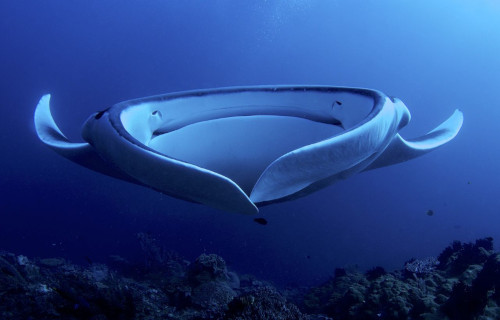
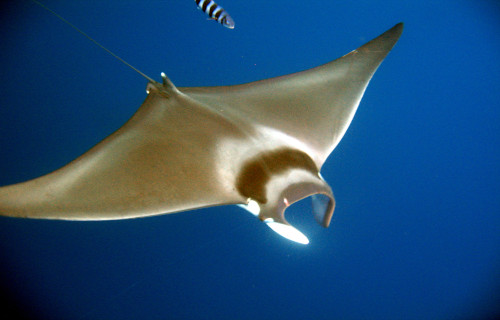

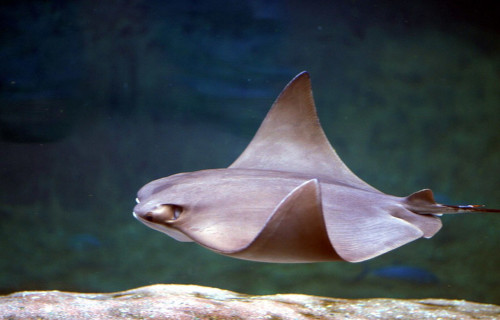
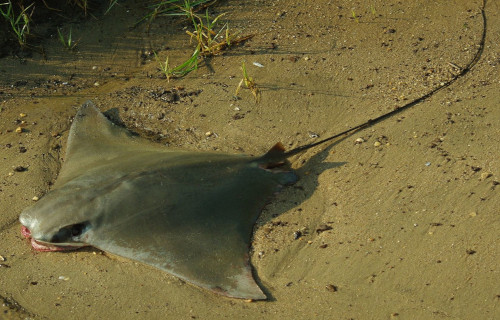
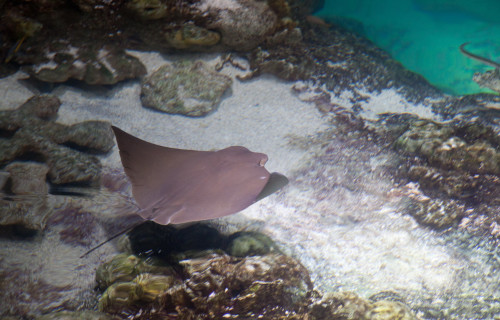









Leave a Reply